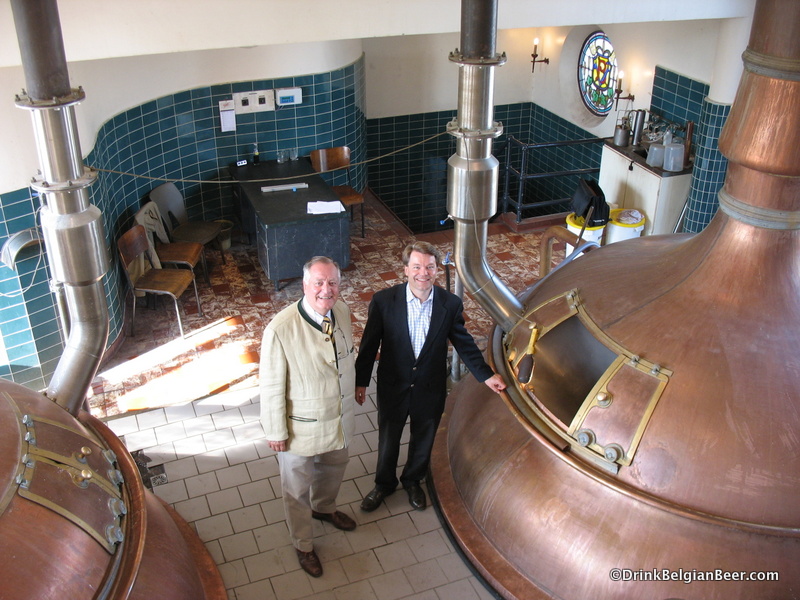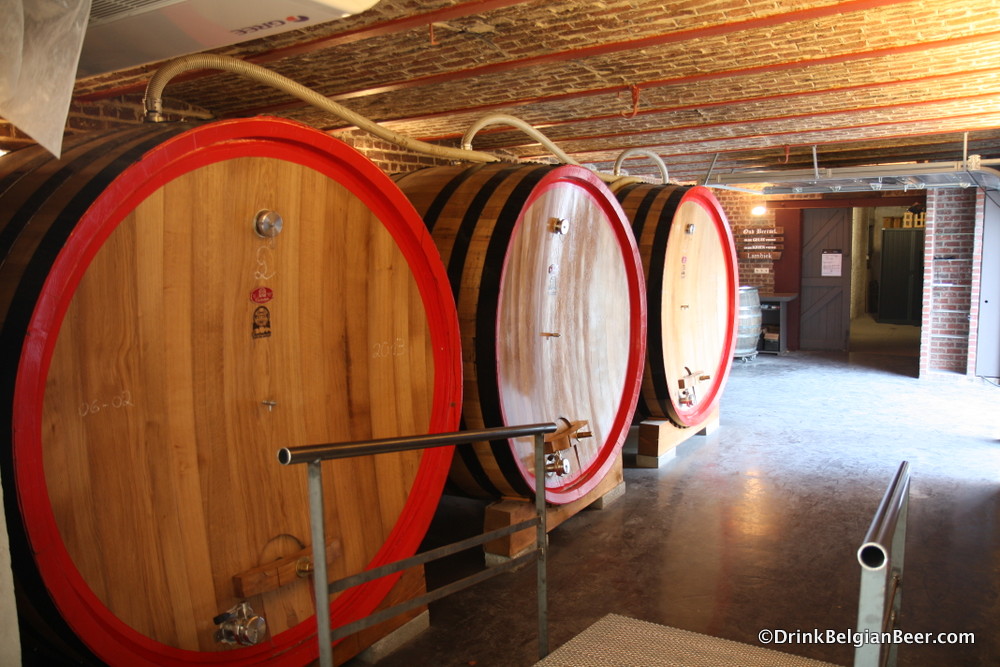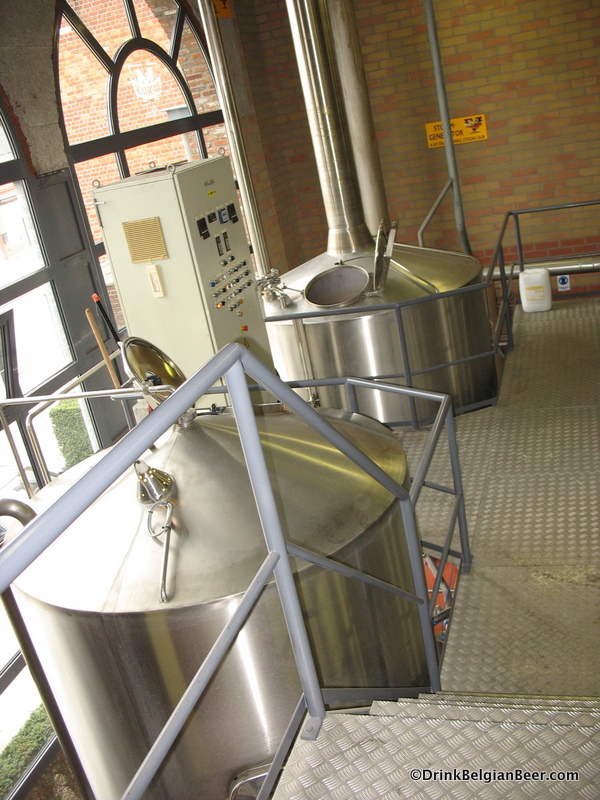3. Belgian producers and beers
Who brews such beers, what beers, and what is the story behind them ?

a. Malheur
Emmanuel (Manu) De Landtsheer states the inspiration for his “champagne” beers comes from his love of wine and beer. He wanted to make a cross-over, combining elements of both worlds, and that is why he came up with his Bière Brut.

The current range:
• Malheur Bière Brut is the original one, launched in 2002. It is gold colored and contains 11% ABV. The base beer is the Malheur 10.
• Malheur Dark Brut was launched in 2003 and as its name suggests is a dark version. It is based on Malheur 12 and is aged in American oak barrels. It stands at 12% ABV.
• Malheur Cuvée Royale was launched in 2005 to commemorate 175 years of Belgium. The blond beer is based on Malheur 8 and stands at 9% ABV.
• Malheur Extra Brut was launched in 2012 and is a limited, dry hopped edition of the Bière Brut.



Manu never used the term “champagne” on the label or in any communication, but used the terms “brut” and “réserve”. However, the national and international press virtually always described the beer as “champagne beer” to the displeasure of the champagne lobby. Veuve Cliquot and CIVC (Le Comité Interprofessionnel du vin de Champagne, an organisation under the direction of the French government, charged among others with organizing and controlling the promotion of the wines of Champagne) sued Malheur for the use of all terms that could be linked to champagne. It took 5 years to come to a conclusion that is satisfactory to all. The brewery is now allowed to use the term “brut”, but any direct or indirect reference to champagne is prohibited. That is why Manu now describes the beers as being “à la méthode originale”.

b. Bosteels
I was told by Antoine Bosteels that the inspiration came during brunching together with a family member of Antoine‘s spouse, a champagne importer. It was noticed that champagne was available, not beer. This launched the idea of doing something champagne like with beer.
Their beer is called “DeuS, Brut des Flandres”, standing at 11.5 % ABV.

Antoine Bosteels has a lovely poetic phrase to describe it: “divine grain bubbles”. It constitutes no more than 1 % of the brewery’s volume and is thus a showcase. Upon my recent visit, I was given the privilege to sip various bottles, also some that were condemned. There may be various reasons for condemnation, the most important being the fact that the sparkle was not good enough. I must say such beers had a perfect taste, still the brewery destroys the beer, ensuring the consumer only gets the best.


c. Oud Beersel
Gert Christiaens, owner of Oud Beersel, started cooperating with a Limburg winemaker and wine club, Domus Ad Fontes, who are making sparkling wine. He provides them with his beer, and they perform the “method champenoise”.
(Note from DrinkBelgianBeer.com: here is an article about the origin of the Bzart beers from last year.)


There are now 4 beers, each with a different Oud Beersel beer as the basis
• Oud Beersel bzart-Lambic
• Oud Beersel bzart-Oude Geuze
• Oud Beersel bzart-Kriekenlambiek
• Oud Beersel bzart-Oude Kriek
It is difficult to get the exact alcohol level of these beers, as the outcome dares change. Recent versions I have seen hover around 8 ° ABV.




d. Damejeanne
Patrick Theunissen from Antwerp is performing the “méthode champenoise” on someone else’s beer. He launched Damejeanne, the basis of which had to be a beer from Boelens. However, the Boelens beer was not ready, and so Patrick used a beer from Den Triest (Marc Struyf) to “champagnify”. This is the luxury version of what is now also launched as the Den Triest Smoel Brut d’Anvers.
4. Conclusion
Belgian brewers were the first to make champagne beers. Since a few years brewers from other countries have copied this approach.
Champagne beers are hard to make, and take a lot of time, hence those Belgian beers are expensive. However, they are fantastic for any occasion like X-Mas, New Year, Thanksgiving, etc. You can savor them as an aperitif, dessert or digestif. And similarly to champagne, they are perfect for food pairing.
Enjoy the festivities in a bubbly fashion. Cheers from Belgium.
Carl Kins can be reached at: ceclkins AT yahoo.com
The beers of Malheur/De Landtsheer are imported into the U.S. by Belukus Imports of Austin, Texas. Brad Batson of Belukus had this to day: “Both Malheur Brut and Malheur Dark Brut are exquisite beers. We are determined to keep sampling these beers as the consumer continues to find the shelf price challenging. We are certain that once they try these beers that they will fall in love with them, just as we have!”
The Bzart Brut beers are imported into the U.S. by Vanberg and DeWulf Importers of Cooperstown, N.Y. Don Feinberg of Vanberg & DeWulf told me at press time: “For me, Bzart is simply the most elegant Gueuze I have ever had. Is it super funky or sour? Definitely Not! But well balanced, bone dry and refined, without doubt.” He added: “In fact, French writer Victor Hugo called gueuze ‘The Champagne of the North.’ I think Bzart is the truest example of that description.”
The beers of Brouwerij Bosteels are imported into the U.S. by Artisanal Imports of Austin, Texas. Lanny Hoff of Artisanal Imports had this to say about DeuS: “We are proud to offer DeuS in the US. With it’s two-stage production (fermentation in Belgium, riddling in France) there is no other beer like it. DeuS takes over a year to make—no other offering in this category has such a meticulous, time-consuming method of production.”
(Disclaimer from DrinkBelgianBeer.com: the information, opinions, and views expressed in this article are those of Carl Kins, and are not necessarily shared by, or endorsed by, this website, or its owner.)
Sorry about the legal stuff, but you know how it is these days.
Here’s Carl’ full bio:
Judge experience*: World Beer Cup and Great American Beer Festival since 2004, Champion Beer of Britain since 2005, Birra dell’Anno (Italy) since 2006, Mondial de la Bière (Canada) in 2009, regular judge at Saaz Hop Festival (Czech Republic), Staatsmeisterschaft (Austria), European Beer Star (Germany), etc.
Beer experience:
My fascination for beer started at an early age. Especially, Belgium’s beer range and breadth of aromas and flavors attracted me. Since then, the passion has continued to grow and has led me to read and learn a lot about the history of making beer, the process of making it, and the ingredients used. Beer has brought me to many countries and hundreds of breweries and brewpubs, with particular focus on world renowned traditional beer countries Belgium, Czech Republic and the United Kingdom and less upcoming beer countries such as USA and Italy. This has made it clear to me that the world of beer is ever changing and expanding, whereby the new producing “kids on the block” are ensuring sufficient choice for the consumer, continued innovation, combined with local embeddedness through e.g. the use of local ingredients and local sales. Clearly, the beer world is fascinating. That is why I like to share my thoughts and opinions in beer magazines in Belgium, Italy and USA and as a member of the Executive of the European Beer Consumers Union, representing 13 national organizations with more than 170 000 members combined.







Leave a Reply